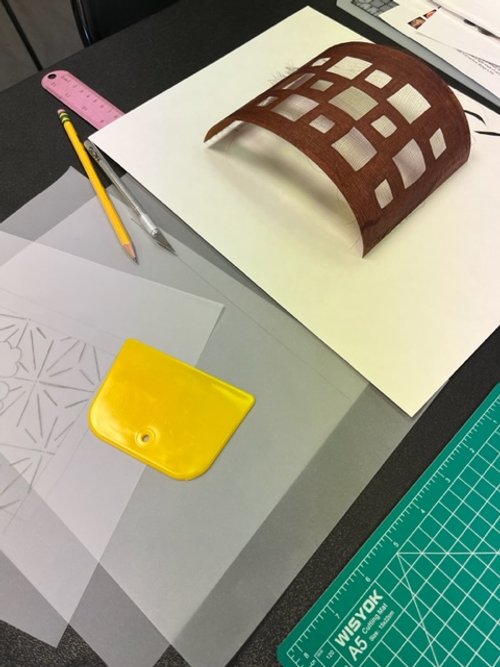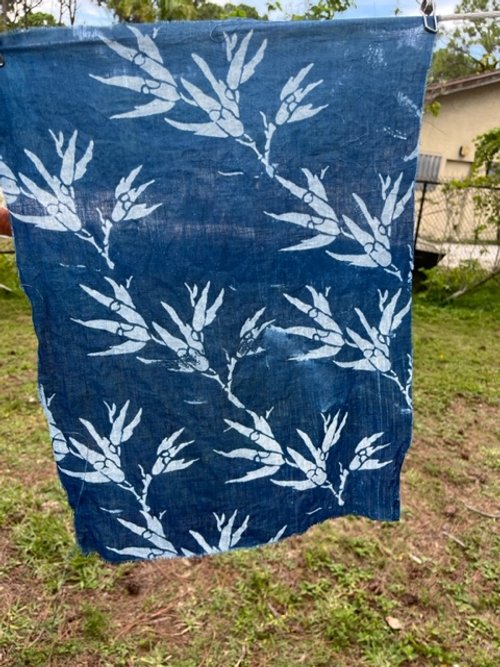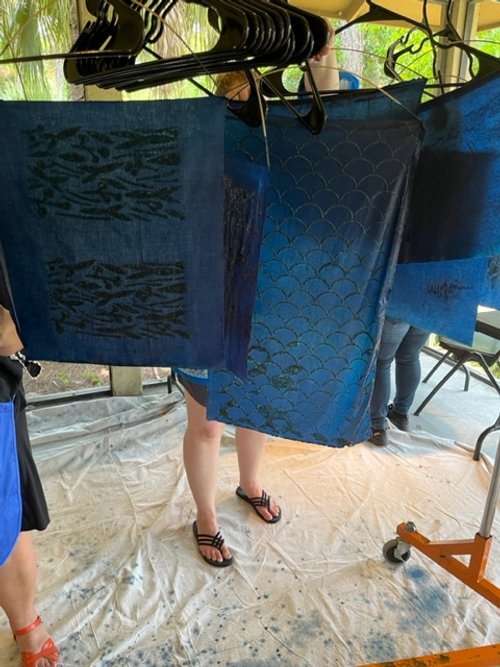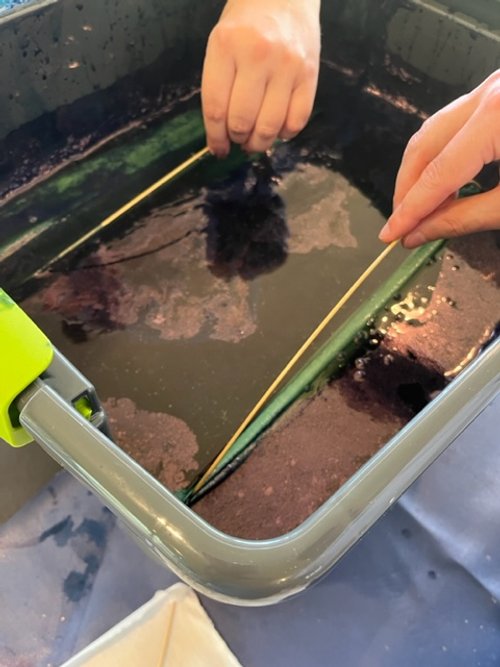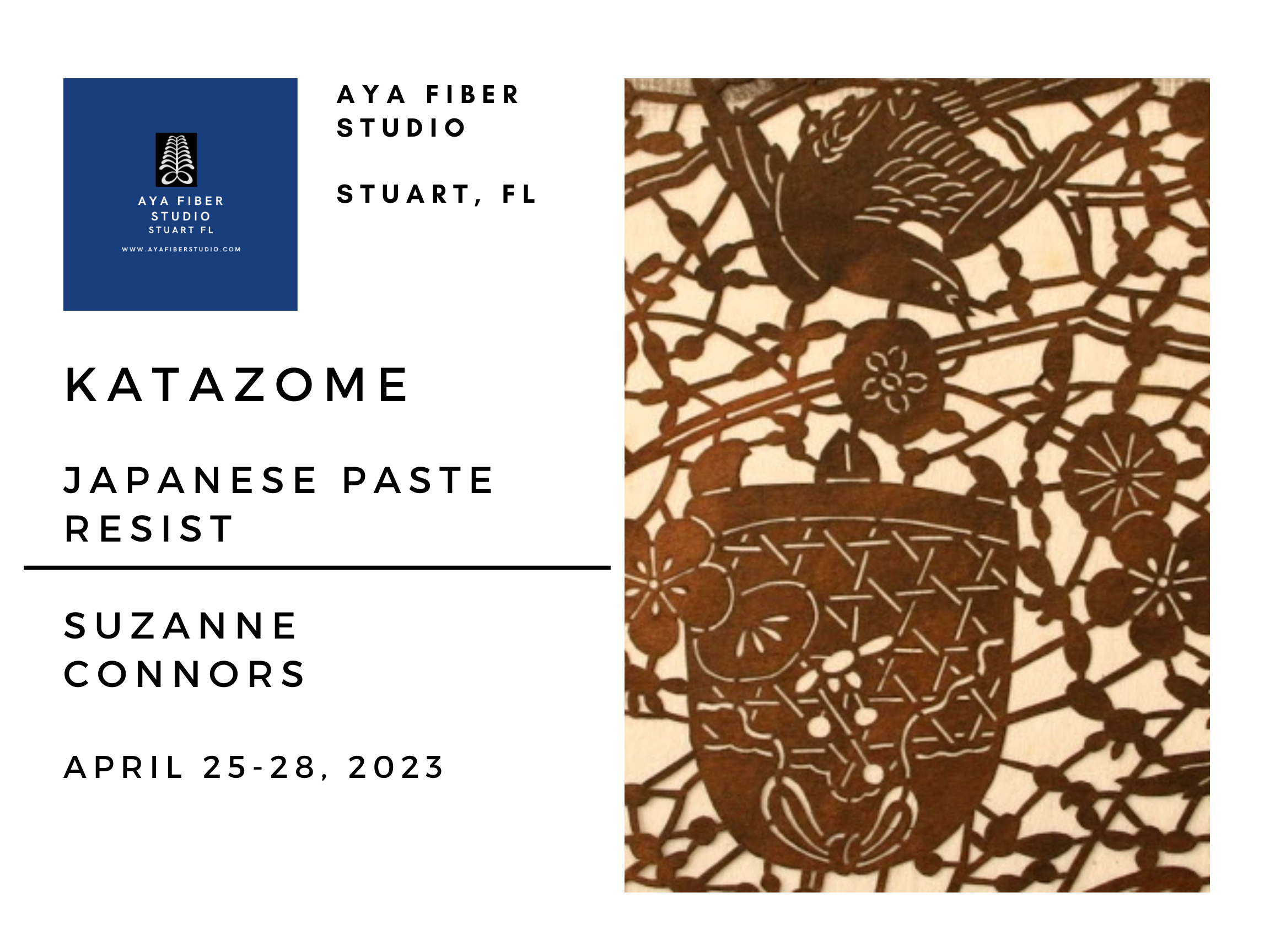Calendar of upcoming events.
Click on the Image for more Info

Katazome: Japanese Paste Resist with Suzanne Connors
The traditional Japanese art of katazome is ancient. Kata means stencil and zome is a form of the word someru which means to dye- hence katazome (stencil dyeing)
The basic process of stencil dyeing is not complicated. First a stencil is cut and placed on a piece of fabric. Next resist paste is applied through the stencil. The
Stencil is then removed, and the pasted fabric is allowed to dry in the sunlight. Fabric is then treated with sizing if going to be dyed with pigments. Fabric is then dyed or the coler pigments brushed on.
Finally, the fabrics soaked in water to remove the paste.
The steps of katazome must be followed in sequence, and timing is essential.

Katazome: Japanese Paste Resist with Suzanne Connors
The traditional Japanese art of katazome is ancient. Kata means stencil and zome is a form of the word someru which means to dye- hence katazome (stencil dyeing)
The basic process of stencil dyeing is not complicated. First a stencil is cut and placed on a piece of fabric. Next resist paste is applied through the stencil. The
Stencil is then removed, and the pasted fabric is allowed to dry in the sunlight. Fabric is then treated with sizing if going to be dyed with pigments. Fabric is then dyed or the coler pigments brushed on.
Finally, the fabrics soaked in water to remove the paste.
The steps of katazome must be followed in sequence, and timing is essential.
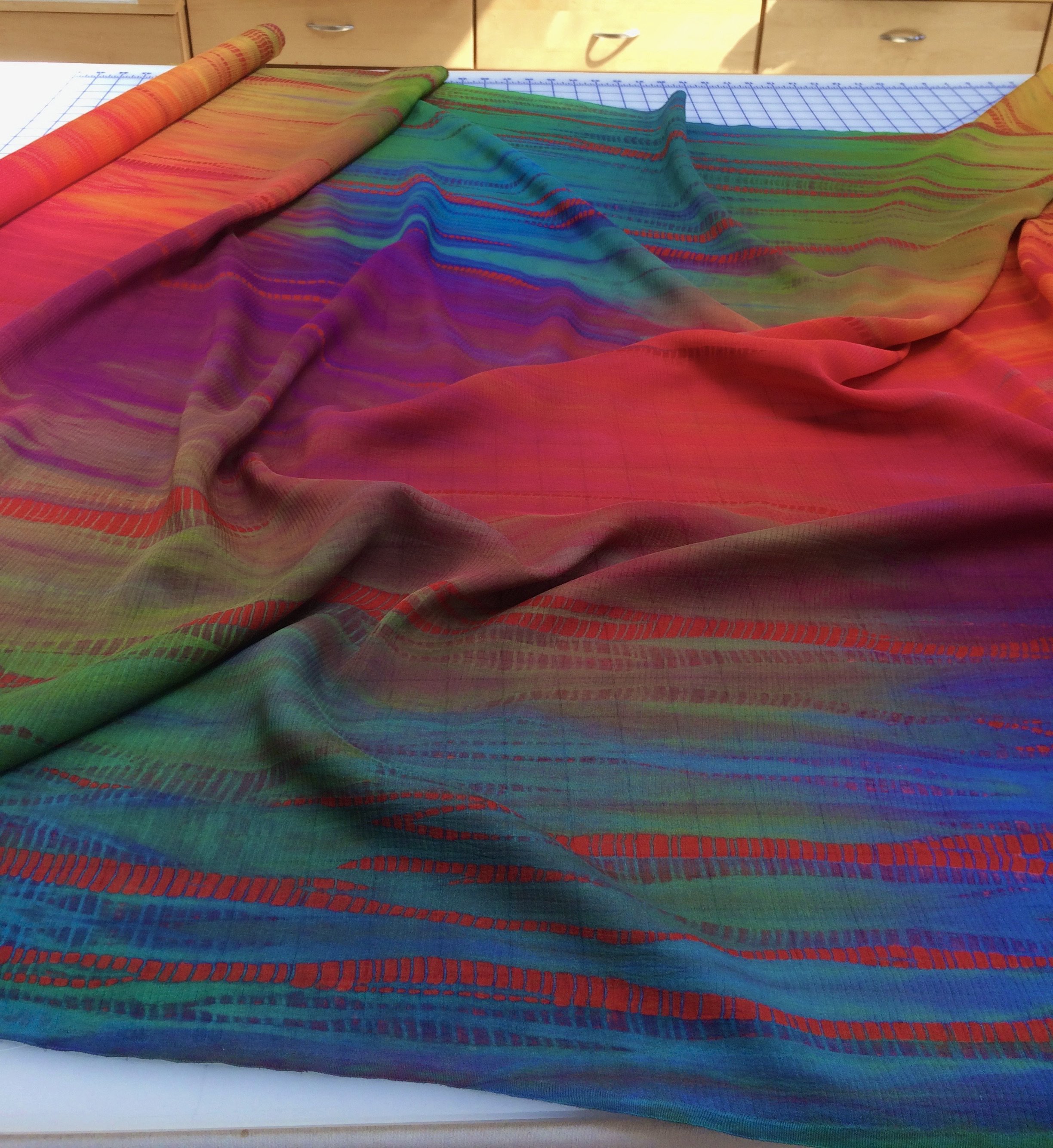
COLOR AND LAYERING IN SHIBORI with Doshi-
Shaped-resist dyeing is a textile art that is thousands of years old. In Japan it’s known as Shibori, in other cultures by a variety of names—Plangi, Bandhani, Adire,Tie-dye. While applying pressure to shaped fabrics before and during dyeing, we can create exquisite patterns of infinite variety on textiles. Samples from all over the world provide infinite approaches to practice several resist techniques: stitching, knotting, pole-wrapping, clamping and rope wrapping. Through using folds, tape, and capping to create compound pattern and through layering these techniques we will produce complex designs. We will explore and study color—inspiration, choosing, and mixing—with acid dyes on a variety of silk fabrics. Building layers of rich color through processes such as pour dyeing, vat dyeing, painting, and discharge increasing the complexity of imagery and patterning.
Register Online: https://ayafiberstudio.corsizio.com/c/63f7472e23e6827e6a95e937

